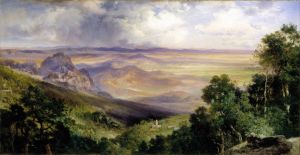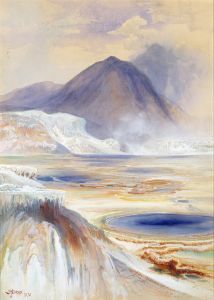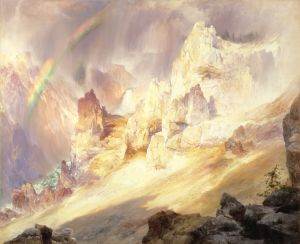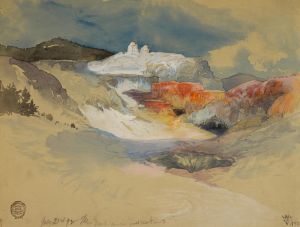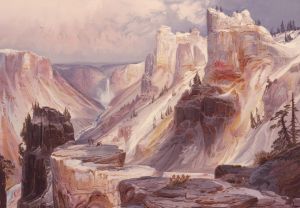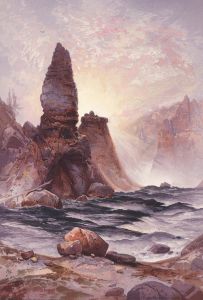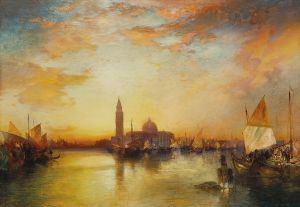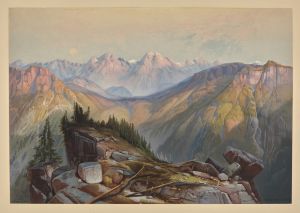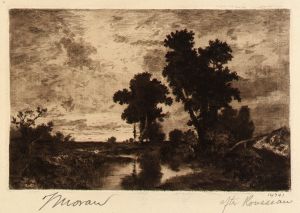
The Mountain of the Holy Cross, Colorado
A hand-painted replica of Thomas Moran’s masterpiece The Mountain of the Holy Cross, Colorado, meticulously crafted by professional artists to capture the true essence of the original. Each piece is created with museum-quality canvas and rare mineral pigments, carefully painted by experienced artists with delicate brushstrokes and rich, layered colors to perfectly recreate the texture of the original artwork. Unlike machine-printed reproductions, this hand-painted version brings the painting to life, infused with the artist’s emotions and skill in every stroke. Whether for personal collection or home decoration, it instantly elevates the artistic atmosphere of any space.
"The Mountain of the Holy Cross" is a renowned painting by the American artist Thomas Moran, completed in 1875. Moran, a prominent figure in the Hudson River School of painters, is celebrated for his dramatic landscapes that capture the grandeur of the American West. This particular painting depicts the Mountain of the Holy Cross, a peak located in the Sawatch Range of the Rocky Mountains in Colorado.
The Mountain of the Holy Cross gained its name due to a distinctive cross-shaped snowfield that appears on its northeast face. This natural formation became a symbol of divine presence and was a subject of fascination and pilgrimage during the late 19th and early 20th centuries. Moran's painting is one of the earliest artistic representations of this iconic mountain, contributing significantly to its mythos and allure.
Thomas Moran first encountered the Mountain of the Holy Cross during the Hayden Geological Survey of 1873, led by Dr. Ferdinand Vandeveer Hayden. This expedition was one of several government-sponsored surveys intended to explore and document the American West. Moran, who had previously gained fame for his depictions of Yellowstone, joined the survey as an artist, tasked with capturing the landscapes and geological features of the region.
The painting itself is a testament to Moran's skill in rendering the sublime beauty of nature. It features the mountain bathed in the warm glow of sunset, with the cross-shaped snowfield prominently visible. The composition is marked by Moran's characteristic use of light and color, which imbues the scene with a sense of awe and reverence. The painting not only highlights the natural beauty of the mountain but also reflects the 19th-century American Romanticism that viewed nature as a manifestation of the divine.
"The Mountain of the Holy Cross" was exhibited at the 1876 Centennial Exposition in Philadelphia, where it was met with critical acclaim. The painting played a significant role in popularizing the image of the Mountain of the Holy Cross, contributing to its status as a national symbol. Moran's work, along with photographs by William Henry Jackson, helped to cement the mountain's place in American cultural and artistic history.
Today, the painting is part of the collection at the Autry Museum of the American West in Los Angeles, California. It continues to be celebrated as a masterpiece of American landscape painting and a significant cultural artifact that reflects the exploration and romanticization of the American frontier.
Moran's depiction of the Mountain of the Holy Cross remains an enduring image, capturing both the physical beauty and the symbolic significance of this natural wonder. Through his art, Moran not only documented the American landscape but also contributed to the broader narrative of American identity and the nation's relationship with its natural environment.







